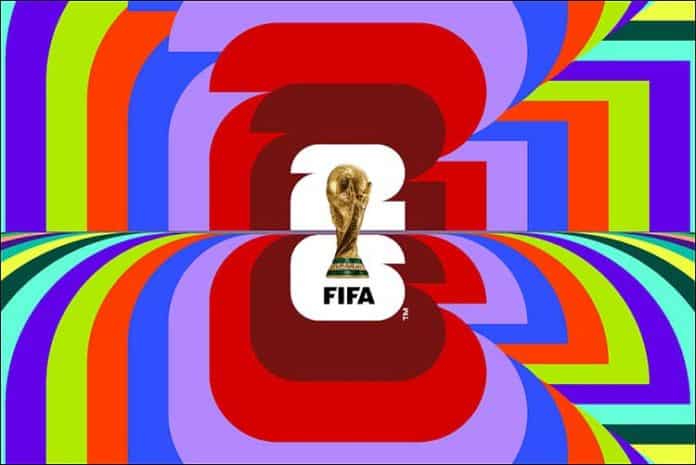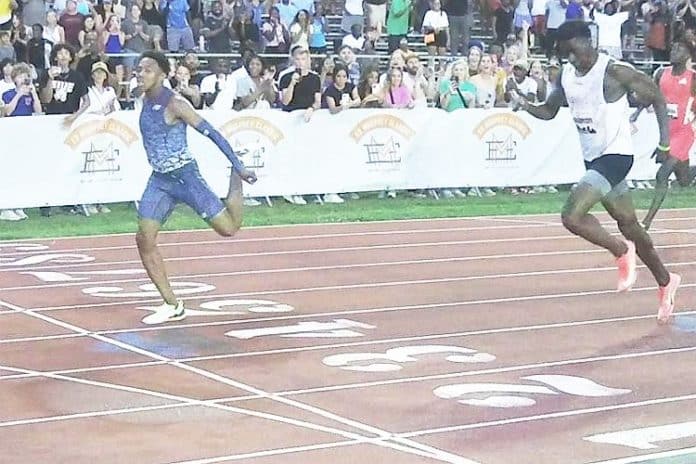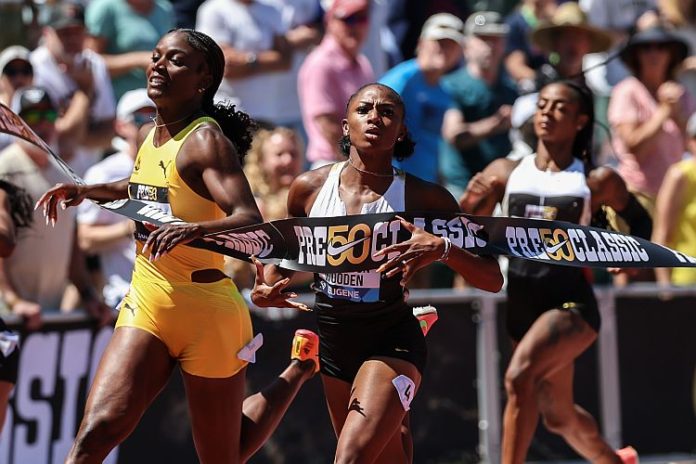★ The Sports Examiner: Chronicling the key competitive, economic and political forces shaping elite sport and the Olympic Movement.★
★ To get the daily Sports Examiner Recap by e-mail: sign up here! ★
≡ FIFA WORLD CUP 2026 ≡
The FIFA Club World Cup that concludes Sunday has made at least one direct impact on the 2026 FIFA World Cup, to be played in Canada, Mexico City and the U.S.: beware of heat.
High summer temperatures in the U.S. caused more than a dozen games to be played in sweltering heat and/or humidity, and FIFA President Gianni Infantino (SUI) – while calling the tournament a great success – added during a Saturday appearance in New York:
“We have seen how America has embraced all different communities from the entire world.
“Of course, the heat is definitely an issue, it’ an issue all over the world. I remember last year we were in Olympic Games in Paris; the games – the football games, even other sports, but speaking about football – so the games being played during the day were played in very hot conditions.
“We need to look at what we can do better. We introduced cooling breaks; it’s obviously very important. We watered the pitch; we can see how we can do things better.
“In America, as well as in Canada for next year – in Vancouver – we have stadiums as well which are covered , so we’ll definitely use these stadiums more in the day. But, of course, these are questions that we have to study.”
Chelsea midfielder Enzo Fernandez (ARG) played in Tuesday’s semifinal against Brazilian club Fluminense in MetLife Stadium in New Jersey in 96 F temps at kickoff at 3 p.m. Eastern time, and reflected days later:
“The other day I got a bit dizzy during a play. I had to lie down on the ground because I was really dizzy. Playing in this temperature is very dangerous, it’s very dangerous … The game, the speed of the game is not the same, everything becomes very slow.”
So, how is that going to work for 2026? Well, there are 16 venues for the 2026 FIFA World Cup, with 11 in the U.S., three in Mexico and two in Canada. Out of these, there are four domed stadiums and one roofed facility, at which 39 of the 104 matches of the tournament will be played:
Fully enclosed:
● Arlington (9 matches): AT&T Stadium (Groups F, J, L)
● Atlanta (8): Mercedes-Benz Stadium (Groups A, C, H, K)
● Houston (7): NRG Stadium (Groups E, F, H, K)
● Vancouver (7): BC Place Stadium (Groups B, D, G)
Roofed, not fully enclosed:
● Inglewood (8): SoFi Stadium (Groups B, D, G)
In the group stage of 72 matches, 25 will be played at one of these five facilities; at least one match in 11 of the 12 groups will be played there (none in Group I). Of the 32 playoff matches, 14 will be played at one of the five. One of the quarterfinals will be in Inglewood, the semis will be in Arlington and Atlanta; the final will be played in open-air Metlife Stadium in East Rutherford, New Jersey, also the site of the Club World Cup final.
Observed: FIFA will want to schedule 2026 World Cup matches, if possible, at times when the playing teams – especially in Europe – will be in favorable time slots for their home markets (and broadcasters). That’s going to be harder now if daytime matches are going to be avoided, given the time differences with the U.S.
Chelsea’s 3 p.m. Eastern match in the final on Sunday airs at 8 p.m. in London and 9 p.m. in continental Europe. Waiting for the sun to go down in open-air stadium moved the games deep into the night in Europe.
So, look for some possible changes in stadium match assignments – which have already been made – to better spread roofed stadiums among the groups. The final draw for the World Cup will be in December.
¶
FIFA held discussions on Saturday with representatives of several player unions (apparently not including the 66,000-member global union FIFPRO), with an agreement on changes to the International Match Calendar (IMC) and player rest:
“There is a consensus that there must be at least 72 hours of rest between matches, and that players should have a rest period / holiday of at least 21 days at the end of each season. This period should be managed individually by each club and the respective players also depending on their match calendars and taking into account applicable collective agreements.
“Furthermore, a rest day per week should also be planned, whilst being managed pragmatically. In addition, it was discussed that player travel – especially long-haul intercontinental trips – and the climatic conditions under which matches are played, should be considered when defining policies for the upcoming IMC.”
The Club World Cup has created significant unrest among player organizations and with some European leagues over its place in the calendar and the size (32 teams) and length of the tournament, over an entire month. The tournament is supposed to be organized again in 2029.
¶
★ Receive our exclusive, weekday TSX Recap by e-mail by clicking here.
★ Sign up a friend to receive the TSX Recap by clicking here.
★ Please consider a donation here to keep this site going.
For our updated, 699-event International Sports Calendar for 2025, 2026 and beyond, by date and by sport, click here!























